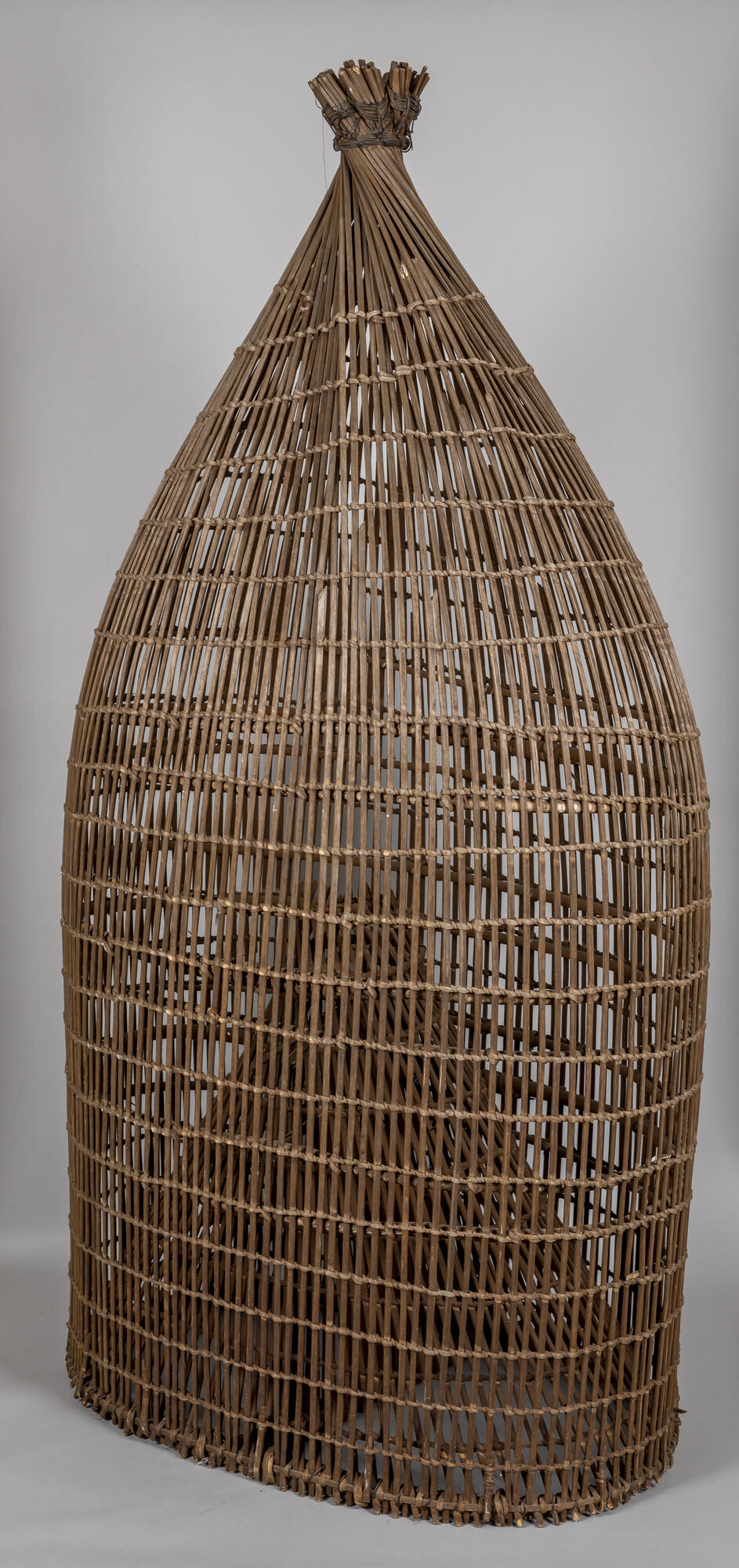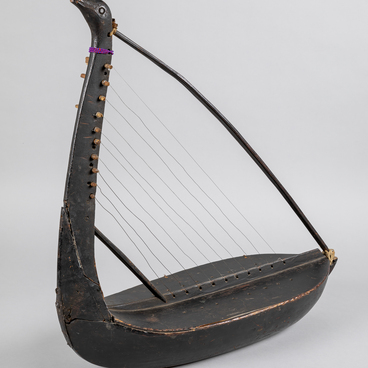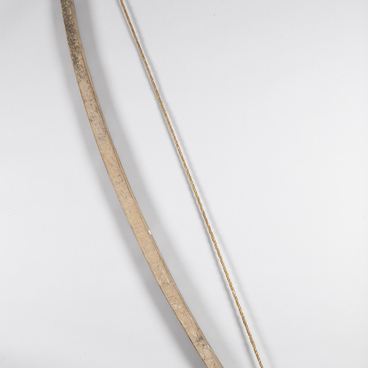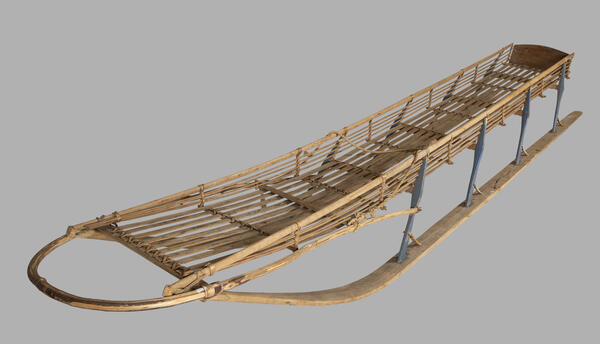For centuries, Khanty fishermen of the Yugan River used a wooden trap called “morda” (snout, muzzle), especially in shallow waters.
The trap consists of two cones woven from wooden ribs inserted into one another (frame and funnel).
Morda fishing traps were made of wooden ribs, cedar root, and thin stems of cherry or willow. There were also traps made of the wood of young willow trees that grow near rivers. The ribs for the morda trap were made of pine trunks. Snag or dried wood was split into thin rakes, which were then planed.
The ribs for the trap’s frame were arrow-shaped with a length of about 180 centimeters. To achieve a firmer connection with the base of the morda trap, notches were cut at the thicker end of the ribs.
Ribs for the funnel could be made of three types: the first was arrow-shaped and 25 centimeters long, the second had a forked bottom and was 60 centimeters long, and the third was the same as the second, only 80 centimeters long.
Cedar root was used for weaving. It was chopped into small strips, soaked in water, then crushed with the butt of a knife on a special wooden break.
Hoops were mainly made of bird cherry, less often willow. They were planed to a diameter slightly thicker than that of a pencil. Bird cherry was chosen based on the thickness of its trunk. The goal was to make a hoop from a single piece of wood. Thicker pieces were split into two or four parts and the core was removed.
A willow or bird cherry bow with a thickness of 20–25 cm served as the base for the frame. Thinner trunks were not suitable, as the trapped fish would get stuck between the walls of the frame and the funnel.
The base of the frame was tied together with the base of the funnel. After that, it was time to weave the funnel from wooden ribs and three hoops each with a much smaller diameter than the previous. The funnel also featured a fourth circular fitting, only it was made of cedar root.
It took about three days to make all the parts of the morda trap (the funnel, the frame and the lid) and attach them to a couple of thin tree trunks at the bottom. This is not counting the time required for gathering materials.





